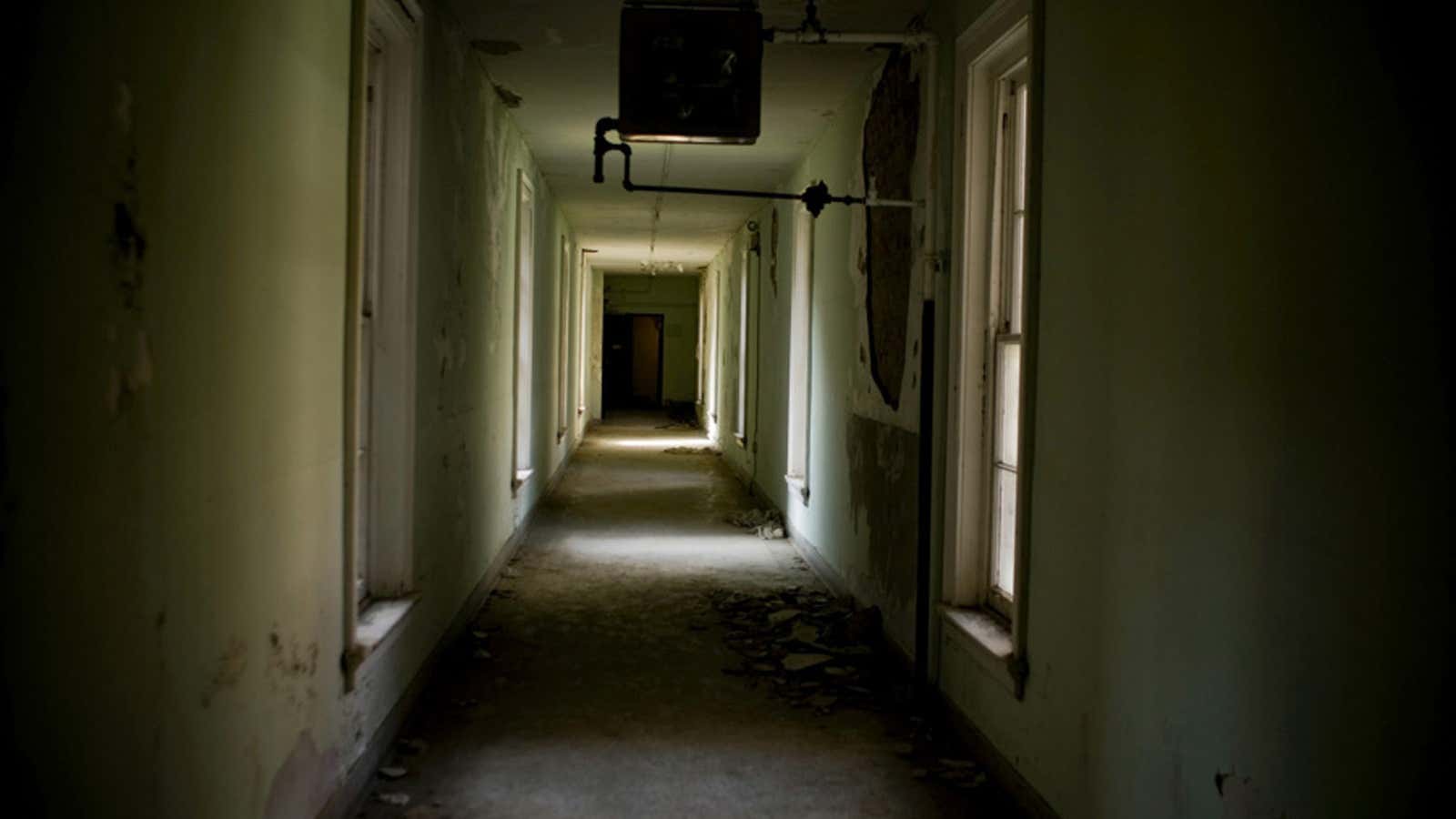For many, the phrase “psychiatric asylum” conjures up haunting and disturbing images: lobotomy procedures, drugged and restrained patients, the creepy facility in the movie “Shutter Island,” the cruel Nurse Ratched from “One Flew Over the Cuckoo’s Nest.” But that image may be outdated.
In a provocative new paper published in the Journal of the American Medical Association, bioethicists at the University of Pennsylvania outline the crisis of mental health care in the United States, and propose a solution: Rehabilitate the ill-reputed institution of the psychiatric asylum.
“It’s really not as radical as it sounds,” Dominic A. Sisti, assistant professor of medical ethics, health policy and psychiatry tells Quartz. Psychiatrists have been making arguments for expanding long-term inpatient care for some time, he says. In their call to “bring back the asylum,” Sisti and his colleagues speak of the original, 19th-century meaning of the term asylum: a place that is a safe sanctuary, that provides long-term care for the mentally ill. “It is time to build them—again,” they write.
Although psychiatric hospitals still exist, the dearth of long-term care options for the mentally ill in the US is acute, the researchers say. State-run psychiatric facilities house 45,000 patients, less than a tenth of the number of patients they did in 1955. With the doubling of the US population, the researchers write, this is a 95% decline.
The process of “de-institutonalization,” or shutting the doors of psychiatric hospitals, started in the 1950s, and was expedited in the 1960s and 1970s with the passage of new healthcare laws that introduced peer-facilitated community treatment, as well as some highly publicized cases of patient abuse.
“Long-term psychiatric treatment has been viewed with suspicion, and rightly so,” Sisti said.
But the mentally ill did not disappear into thin air. Many were put on new medications, and some placed in community-based care; but others became homeless, and many landed in what are now, according to the paper, “the nation’s largest mental health care facilities”—jails and prisons. Studies show that 15 percent of state prison inmates suffer from a psychotic disorder, and it has been widely documented that penitentiary facilities fail to provide adequate mental health care. With the widespread use of tactics such as solitary confinement, they often exacerbate the problem.
While the researchers praise well-designed outpatient community treatment, they say that this kind of care is not the right solution for some severely and chronically ill patients. For them, “the optimal option is long-term care in a psychiatric hospital.” And they call for a return of psychiatric asylums that are “safe, modern and humane.” Sisti told Quartz that the care should be “designed in collaboration with the patient.”
The researchers acknowledge that implementing their proposal would be very costly. For now, it is just a suggestion, Sisti said. But perhaps it’s one worth considering.
